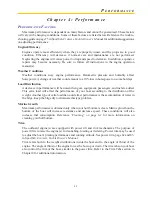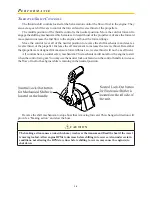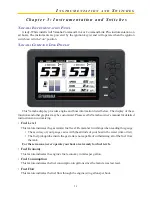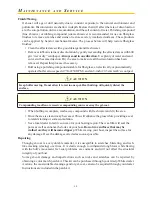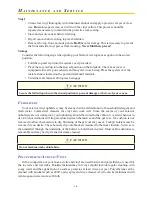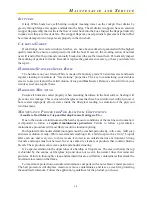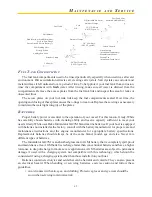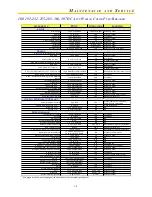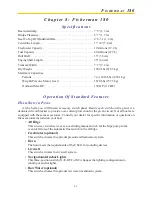
6-7
m
a I n T e n a n C e
a n d
s
e r v I C e
Fill (Installed On Deck)
Carbon Canister
Fuel Tank Vent
(Installed On Hull Side)
Stainless Clamp
Fill
Vent
1-1/2" Fill Hose
(USCG Type A2)
5/8" Vent Hose
(USCG Type B2)
Stainless Clamps
Hull Harness
Green Jumper
(Aluminum Tanks Only)
Manufacturer's Label
3/8" Fuel Feed Hose
(USCG Type A1-15)
Ground Tab
(Aluminum Tanks Only)
Fuel Sending Unit
Pick Up Elbow
Anti-Syphon Valve
Stainless Clamps
Pink (Main) or Pink/White (Aux)
Wire to Fuel Gauge,
Green Ground Wire to Battery (-)
Fuel Tank
To Engine
f
uel
T
ank
C
omparTmenT
The fuel tank compartments need to be rinsed periodically especially when used in a salt-water
environment. Dirt accumulation attracts salt, creating salt crystals. Salt crystals can corrode most
metal surfaces if left untreated over a period of time. To help protect your fuel tank from corrosion,
rinse the compartment with
fresh
water. After rinsing, make sure all water is drained from the
compartments. Remove the access plates from the fuel tank lids and inspect this area for leaks or
unsecured lines.
The access plates on your fuel tank lids keep the fuel compartments sealed. Over time, the
opening and closing of these plates causes the o-rings to wear out. Replace these o-rings as necessary
to maintain the watertight integrity of the plates.
b
aTTerIes
Proper battery power is essential to the operation of your vessel. For this reason, Grady-White
has carefully chosen batteries with cranking ability and reserve capacity sufficient to meet your
needs. Grady-White uses Deka Intimidator 8A27M brand marine batteries. If your boat is equipped
with batteries not installed at the factory, consult with the battery manufacturer for proper care and
maintenance instructions and the engine manufacturer for appropriate battery specifications.
Replacements batteries should always be of the same brand, model, age and size. Never mix
different types of batteries.
The Intimidator 8A27M is an absorbed glass mat (AGM) battery that is completely spill proof
and maintenance free. AGM batteries recharge faster than conventional batteries and have a higher
tolerance to deep discharge for more severe applications. AGM batteries are subject to permanent
damage if used with a charging system not compatible with this technology, which should be
considered if using a charging system other than those installed on your boat.
Batteries contain electrolytes and acids that can be harmful and volatile. They can also present
an electrical hazard. When handling or servicing batteries, exercise caution and follow these
guidelines.
•
Avoid contact with skin, eyes, and clothing. Protective gloves and eye wear should be
worn when servicing to minimize risk.
Summary of Contents for 181 CE 2017
Page 1: ......
Page 3: ......
Page 7: ...T a b l e o f C o n t e n t s ...
Page 11: ...1 4 W e l c o m e ...
Page 25: ...3 6 G e n e r a l I n f o r m a ti o n ...
Page 33: ...5 4 I n s t r u m e n t a ti o n a n d S w itc h e s ...
Page 43: ...6 10 M a i n t e n a n c e a n d S e r v ic e ...
Page 54: ...8 7 Fisherman 180 Safety Labels and Location ...
Page 55: ...8 8 Fisherman 180 ...

